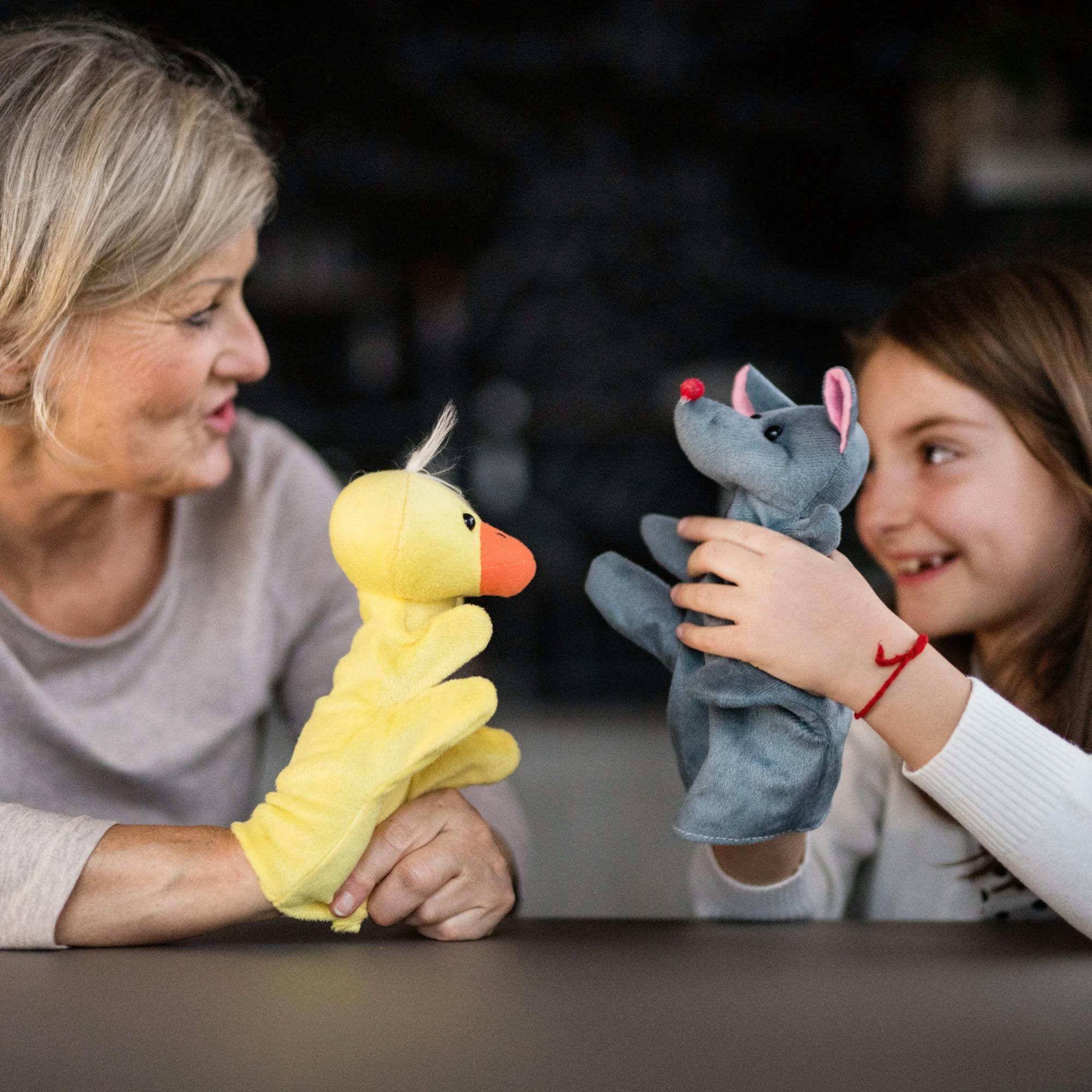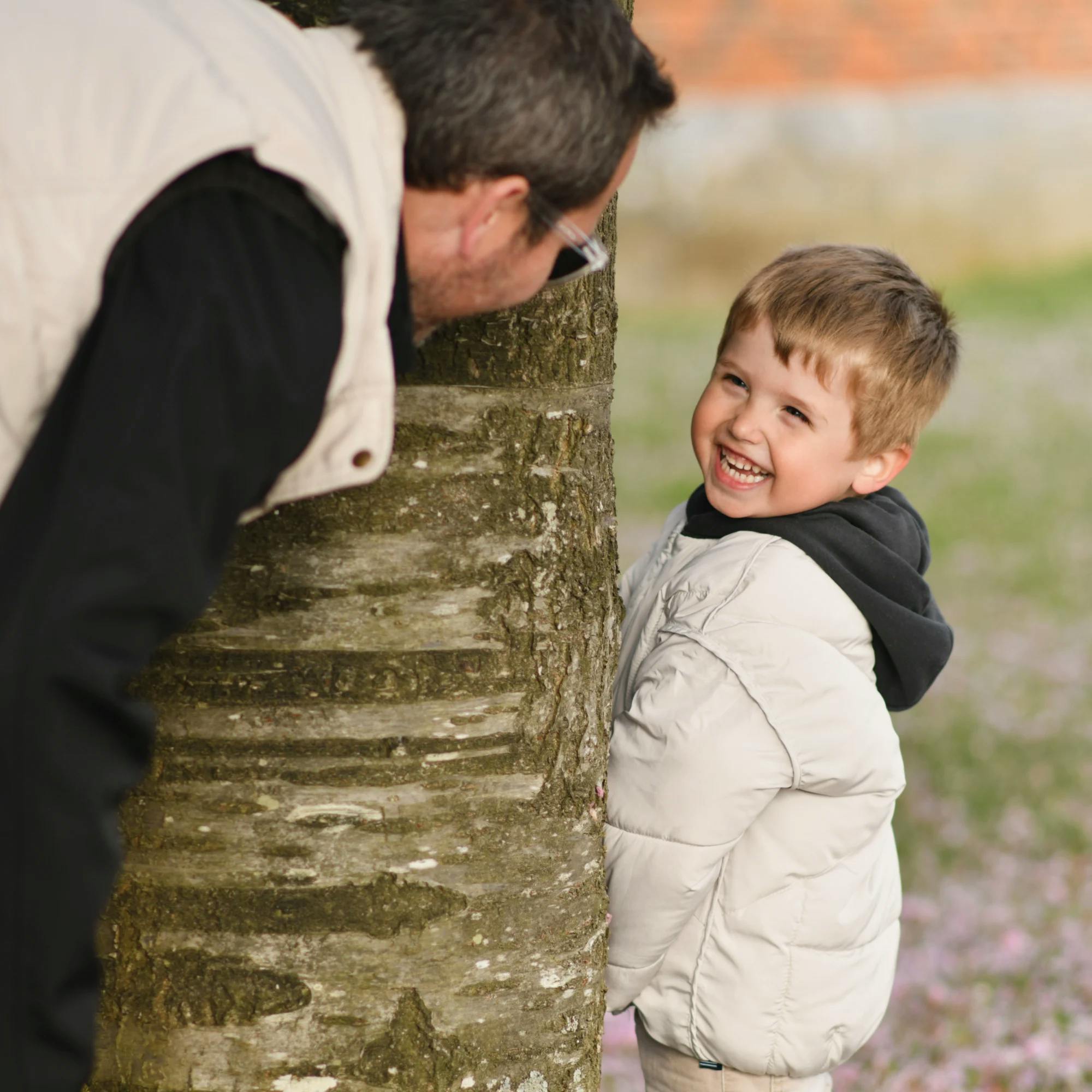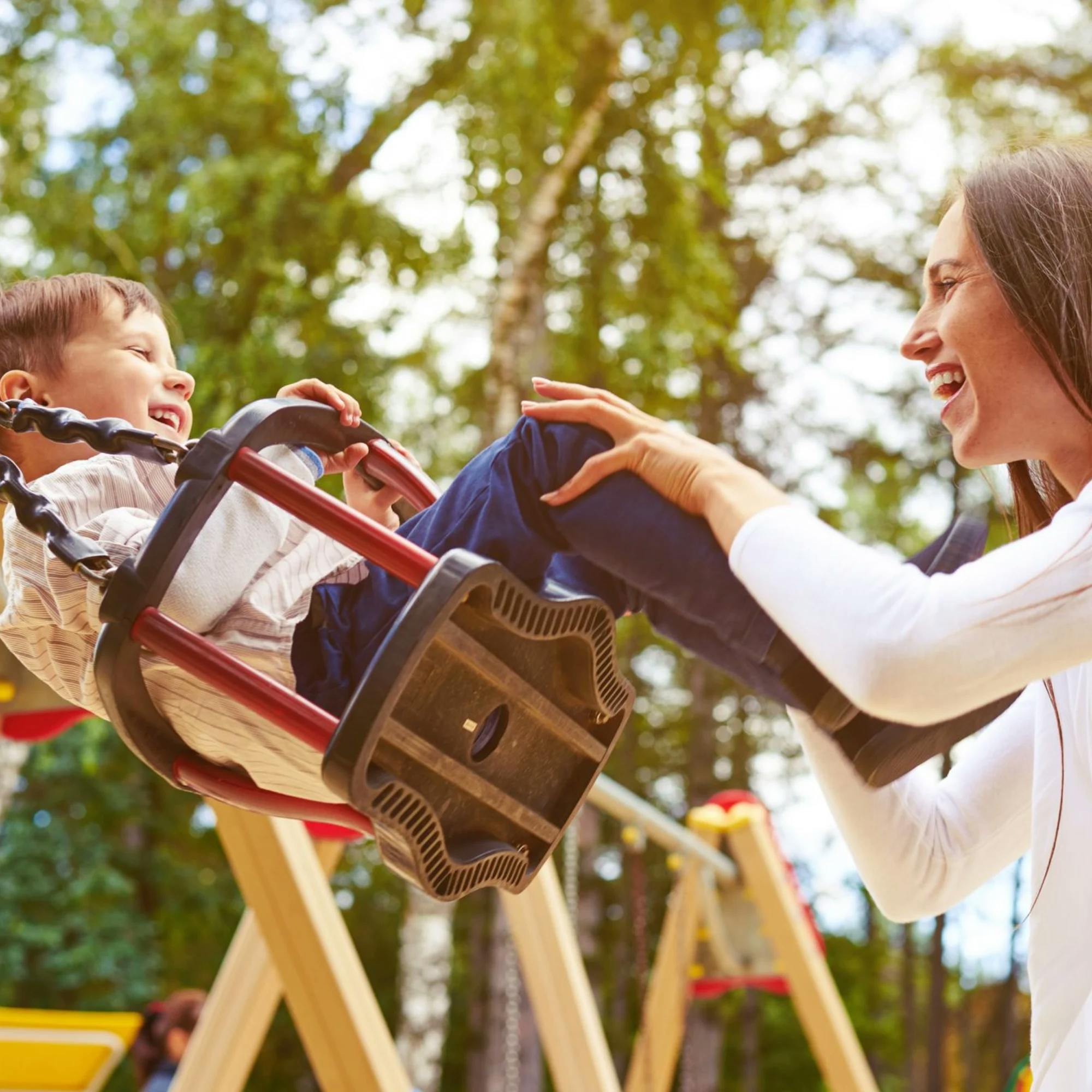One of the best things about communication is that it can be practiced anywhere, anytime–indoors or out!
Does your child love running around at the park? Kicking their soccer ball in the backyard? Blowing bubbles on the back porch? If you’ve got a kiddo who can’t get enough of being outside, you’ve got plenty of fun ways to work in some speech practice.
Read on for several outdoor activities you can do with your child to work on early language skills, articulation, fluency, and social communication.
Drawing with chalk
Sidewalk chalk is an excellent way to practice lots of speech and language skills.
For kids learning to talk: If your young child is working on using more words, practice words that help them request or comment as you draw together. Some examples could be the words “more” or “help.” You can also practice naming the “chalk,” or naming the different colors. Whatever you’re doing or drawing, use that as the basis for teaching related words.
For kids practicing articulation: If your child is working on speech sounds, you can write words or draw pictures that contain their target sounds. You could draw a “rainbow” for the /r/ sound, or a “ball” for an ending /l/ sound.


For children who stutter: You can help your child practice their fluency strategies as you talk together. Keep in mind that every child who stutters is different, and some strategies may work better than others. If your child is in speech therapy for stuttering, be sure to get familiar with what they’re learning in therapy.
Taking a walk
Getting out for a walk provides lots of opportunities for communication growth.
For kids working on social skills: You can practice waving or saying “hello” to people you pass. Remember that this is often a big skill for kids working on social communication. You can model, or demonstrate, this for them and see if they imitate your actions.
For kids learning to talk: Because you’re on the move and seeing lots of different things, you’ve got lots of things to talk about! You can name what you see, like the clouds, houses, cars, or birds. You can also talk about action words to help your child with verb usage and vocabulary comprehension. So maybe instead of simply labeling the birds, you talk about the birds flying. Or instead of naming the cars, you talk about the cars driving.


Going to the playground
When kids are engaged in what they’re doing, it’s a perfect chance to work on their speech and language!
For kids working on comprehension skills: The playground is a fun place to practice following directions. Try giving your child simple directions, such as, “Go to the slide,” or “Go get your water bottle.” If they’re ready for multi-step directions, you can try something more complex. Make it fun, almost like an obstacle course: “Climb up the stairs, go down the slide, run to the swing, then swing 5 times!”
For kids working on social skills: There are also many opportunities to practice social interactions at the playground. Your child can practice introducing themselves to others, asking to play, or inviting others to play with them. If it’s summertime and your kiddo is out of school, this is an easy way to keep working on these skills.
Keep in mind that social situations aren’t always easy to navigate (for kids or adults!). Starting conversations can be hard. But the more your child does it, the easier it will become. Just be sure to stay nearby while they’re around unfamiliar people.


Playing ball
Kicking a soccer ball, bouncing a beach ball, shooting hoops, or playing catch are all perfect outdoor activities for some speech and language practice.
For kids practicing articulation: Try speech sound practice by having your child say a target word each time the other person scores, or each time the ball gets dropped.
For children working on expressive language skills: You can focus on sequencing. Have your child list and describe, in order, the rules of how to play whatever game you’re playing. Describing steps in order, clearly stating directions, or explaining a narrative is an important skill as kids get older. A fun, familiar routine like playing ball is a great way to target this.


Blowing bubbles
Who doesn’t like playing with bubbles? You’re never too old to enjoy this activity with your kiddo.
For children who stutter: You may be able to relate the action of blowing bubbles to using slow, easy speech, or breathing appropriately for fluency. You can talk about diaphragmatic breathing and the importance of breath support to help with smooth, fluent speech.
For kids learning to talk: Bubbles are a hit with toddlers, so this is a good chance to practice early communication. You can talk about opposites, such as “big” or “little” bubbles, or “wet” or “dry” when dealing with the bubble soap. You can also talk about bubbles floating “up” or “down.” These early concepts may seem simple to us, but they need to be taught to early communicators!
If your child is working on stringing words together into phrases, then model some language about the bubbles. You can say things like, “More bubbles!” or “I see the bubbles!” Don’t put too much pressure on your child to repeat after you. But when they’re given the opportunity, they may just surprise you!


Your role in helping your child practice speech at home
When kids are working on their communication skills, it can’t be overstated how important daily practice is. Kids learn best from people they’re comfortable with and see every day. So who better to practice with than you? The more you work on these skills together, the faster your child will make progress!


However, it’s important to notice when your child needs a break. In many cases, just 5 to 15 minutes of practice is enough. But if your child is getting frustrated, be sensitive to that, and let them take a break. You can resume practice another time.
Remember to give your child lots of encouragement and praise. Let them know you see how hard they’re working. We want speech practice to be positive, not stressful. So most importantly, have fun together! The learning will come naturally when the two of you are enjoying the moment.
How Expressable Can Help
Concerned your child isn't reaching age-expected milestones? Looking for communication support from a professional? Expressable is a national online speech therapy practice serving children and adults. We treat all major areas of communication and feeding, offer flexible hours including evenings and weekends, and accept most major health insurance plans. We’re proud to have earned more than 3,000 5-star reviews from our clients (4.9/5 average).
Our therapy model is centered on parent and caregiver involvement. Research proves that empowering caregivers to participate in their loved one’s therapy leads to better outcomes. That’s why we combine live, 1-on-1 speech therapy with personalized education and home practice activities for faster progress.
Communication is more than words. It’s how we share how we feel and show who we are. We’re here to help you or your child do just that.
 Abby Barnes, M.S., CCC-SLP
Abby Barnes, M.S., CCC-SLP







